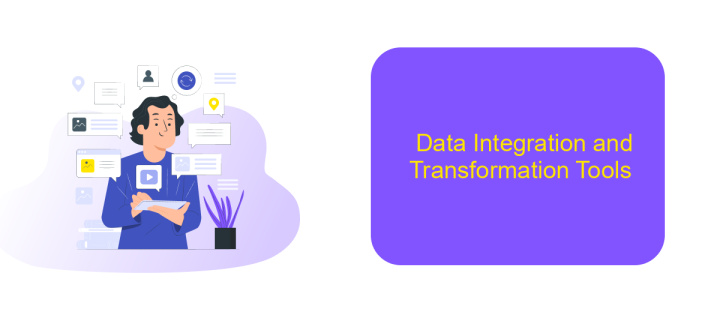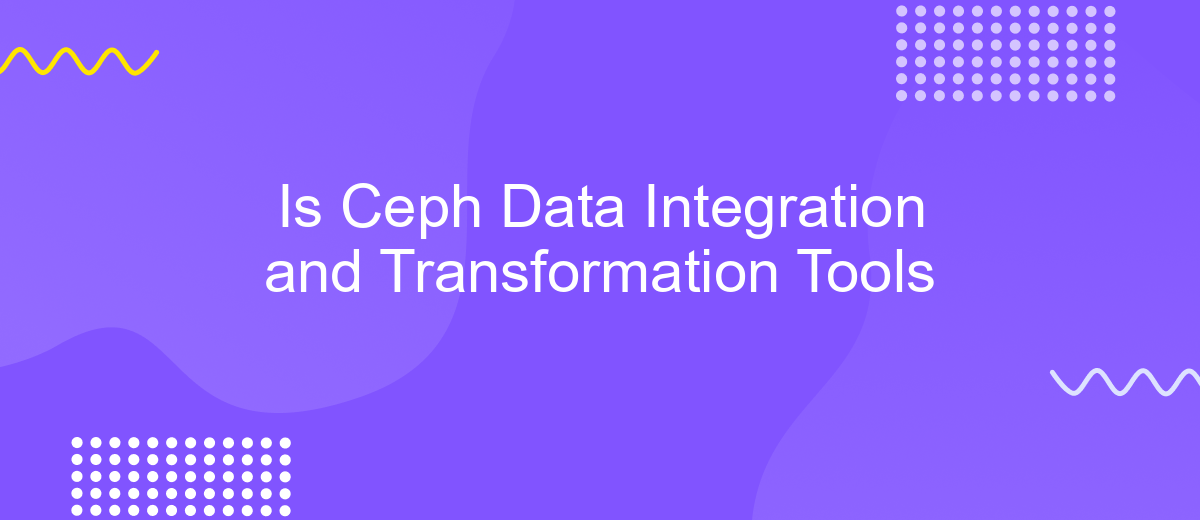Is Ceph Data Integration and Transformation Tools
Ceph is a powerful, open-source storage platform designed for high performance, reliability, and scalability. As organizations increasingly rely on vast amounts of data, integrating and transforming this data efficiently becomes crucial. This article explores Ceph's data integration and transformation tools, highlighting their capabilities and how they can enhance data management processes, ensuring seamless operations and improved decision-making.
Introduction
Ceph is a highly scalable, open-source storage platform designed to handle large amounts of data efficiently. With its ability to provide object, block, and file storage in a unified system, Ceph has become a popular choice for organizations looking to manage their data seamlessly. However, integrating and transforming data within Ceph can present challenges that require specialized tools and strategies.
- Data integration: Combining data from various sources into a cohesive dataset.
- Data transformation: Converting data into a format suitable for analysis or other applications.
- Scalability: Ensuring the system can grow with increasing data volumes.
- Automation: Reducing manual effort in data handling processes.
In this article, we will explore the different tools and techniques available for data integration and transformation within Ceph. We will also discuss best practices to optimize these processes, ensuring that your data remains accessible, reliable, and ready for analysis. Whether you are new to Ceph or looking to enhance your existing setup, this guide will provide valuable insights to help you achieve your data management goals.
Ceph Object Storage

Ceph Object Storage is a highly scalable and reliable solution designed to store massive amounts of data. It leverages a distributed architecture, ensuring data durability and availability by replicating objects across multiple nodes. This redundancy not only enhances fault tolerance but also facilitates seamless data access, even during hardware failures. Ceph’s self-healing capabilities automatically detect and rectify inconsistencies, providing a robust and efficient storage environment.
Integration with Ceph Object Storage can be streamlined using various tools and services. For instance, ApiX-Drive offers a user-friendly platform to automate data flows between Ceph and other applications. This service simplifies the process of connecting Ceph with different data sources, enabling real-time data synchronization and transformation. By utilizing ApiX-Drive, organizations can enhance their data management strategies, ensuring that their Ceph Object Storage operates at peak efficiency with minimal manual intervention.
Ceph Block Storage

Ceph Block Storage, also known as RADOS Block Device (RBD), is a high-performance, distributed block storage system designed for cloud and virtualized environments. It provides scalable and reliable storage by distributing data across multiple nodes, ensuring fault tolerance and redundancy. Ceph RBD integrates seamlessly with various platforms like OpenStack, Kubernetes, and VMware, making it a versatile choice for different storage needs.
- Scalability: Ceph can scale out by simply adding more nodes, allowing for petabyte-level storage capacity.
- Reliability: Data is replicated across multiple nodes, ensuring high availability and fault tolerance.
- Flexibility: Supports integration with various cloud and virtualization platforms.
- Performance: Delivers high I/O performance suitable for demanding applications.
- Cost-Effective: Utilizes commodity hardware, reducing overall storage costs.
In summary, Ceph Block Storage offers a robust, scalable, and flexible solution for modern data storage needs. Its ability to integrate with multiple platforms and provide high availability makes it an ideal choice for enterprises looking to optimize their storage infrastructure. With Ceph RBD, organizations can achieve efficient and reliable storage solutions without compromising on performance or cost.
Data Integration and Transformation Tools

Data integration and transformation are critical components in managing and analyzing large volumes of data. These processes enable organizations to combine data from various sources, ensuring it is clean, consistent, and ready for analysis. Ceph, an open-source storage platform, provides robust support for these tasks, making it easier to manage and transform data efficiently.
Ceph's architecture allows for seamless integration with various data sources, supporting both structured and unstructured data. This flexibility is essential for businesses that need to integrate data from multiple systems, such as databases, data lakes, and cloud storage services. By leveraging Ceph, organizations can streamline their data workflows and enhance their data analytics capabilities.
- Scalable storage solutions for large datasets
- Support for various data formats and sources
- High availability and fault tolerance
- Integration with popular data processing tools
- Automated data replication and backup
In summary, Ceph offers a comprehensive suite of tools for data integration and transformation. Its scalability, flexibility, and reliability make it an ideal choice for organizations looking to optimize their data management processes. By integrating Ceph into their data infrastructure, businesses can ensure that their data is always accessible, accurate, and ready for analysis.
- Automate the work of an online store or landing
- Empower through integration
- Don't spend money on programmers and integrators
- Save time by automating routine tasks
Benefits of Ceph Data Integration and Transformation Tools
Ceph data integration and transformation tools offer numerous benefits for organizations managing large volumes of data. One of the primary advantages is the ability to seamlessly integrate disparate data sources into a unified system, ensuring data consistency and accessibility. This leads to improved decision-making processes, as data from various platforms can be consolidated and analyzed in real-time. Additionally, Ceph's robust architecture ensures high availability and reliability, minimizing the risk of data loss and downtime.
Another significant benefit is the efficiency of data transformation processes. Ceph tools streamline the conversion of data into usable formats, making it easier for businesses to extract valuable insights. Integration services like ApiX-Drive can further enhance these capabilities by automating the data flow between different applications and systems. This reduces the manual effort required and speeds up the overall data processing time. Consequently, organizations can focus more on strategic initiatives rather than getting bogged down by technical complexities.
FAQ
What is Ceph?
How does Ceph handle data integration and transformation?
Can Ceph be integrated with other data management tools?
What tools can be used for automating data integration with Ceph?
Is it difficult to set up data integration with Ceph?
Routine tasks take a lot of time from employees? Do they burn out, do not have enough working day for the main duties and important things? Do you understand that the only way out of this situation in modern realities is automation? Try Apix-Drive for free and make sure that the online connector in 5 minutes of setting up integration will remove a significant part of the routine from your life and free up time for you and your employees.


